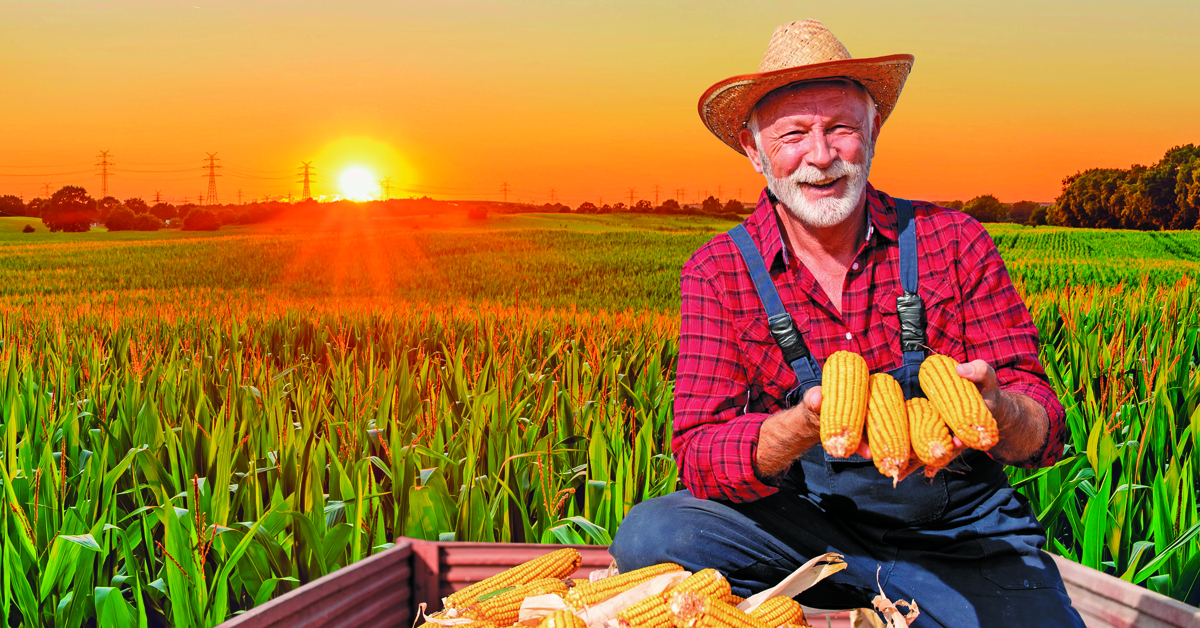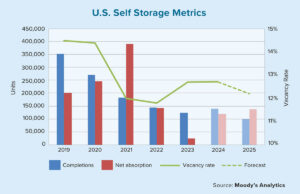Nearly a century ago, Grant Wood took a summer drive with University of Iowa art student John Sharp in the town of Eldon, Iowa. They drove by a house with a prominent arched window when Wood asked Sharp to pull over.
Wood, a painter trained in Europe, sketched the house and would later return to his Cedar Rapids studio to create one of the most famous paintings of the 20th century. “American Gothic,” the hayfork- holding farmer and his daughter in front of their rural farmhouse, became an instant sensation, partly because of its ambiguity.
Was it depicting Midwesterners out of step with modern life? Or was it meant to reassure Americans about rural values at the onset of the Great Depression?
The models in the painting were actually Wood’s sister and their shared dentist. Wood couldn’t have chosen a better setting than the U.S. heartland to depict rural and farming life in America. Farming remains central to the Great Plains states of Iowa, Kansas, Missouri, Nebraska, Oklahoma, and North and South Dakota.
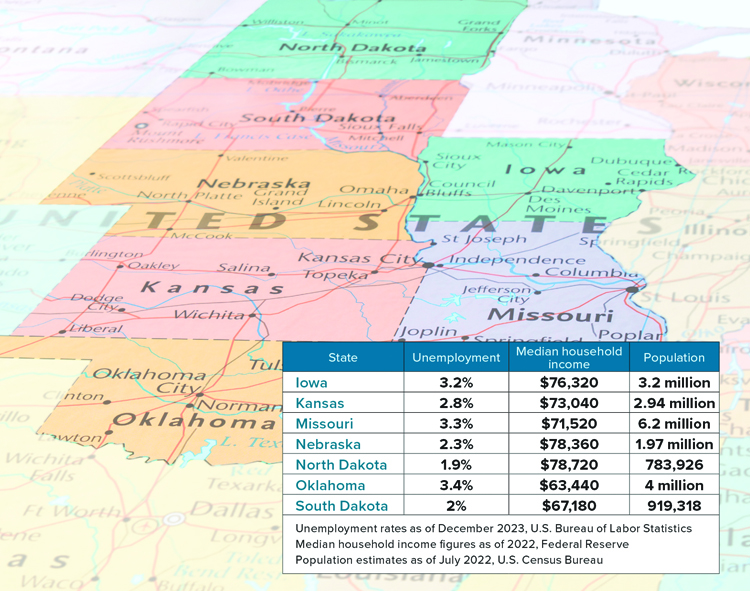
Iowa ranks No. 1 in the country with 24.4 million acres of planted crops, followed by Kansas (24 million) and North Dakota (23.7 million), according to Farm Progress, an agriculture business information company. Nebraska ranked No. 6 (19.7 million), South Dakota at No. 8 (17 million) and Missouri at No. 9 (14.3 million.)
Cattle ranching also plays a large role in these states. Nebraska ranks No. 2 in the nation for head of cattle (6.5 million) followed by Kansas at No. 3 (6.25 million), Oklahoma at No. 5 (4.6 million), Missouri (4.1 million), Iowa and South Dakota tied for No. 7 (both at 3.65 million).
Missouri ranks No. 2 in the nation with 95,000 individual farms with Iowa at No. 3 (84,900) and Oklahoma No. 4 (77,200).
Surprisingly, only three of the biggest agricultural companies in the U.S. lie in the Great Plains states footprint. Bunge Ltd. in Chesterfield, Missouri, which focuses on soybean production, ranks No. 3. The company has annual revenue of $67.2 billion. Dairy Farmers of America, an agricultural cooperative in Kansas City, Kansas, comes in at No. 7 ($24.5 billion.) Multinational agribusiness and transportation conglomerate Seaboard Corp. in Marriam, Kansas, comes in at No. 13 ($11.2 billion.)
The struggles of individual farmers will likewise affect the future of the region. A McKinsey report in 2022 found that farmers have a growing concern over the economic viability of their businesses, with the cost of fertilizer and other chemicals at all-time highs, disturbing drought conditions and labor costs rising rapidly. Automation in farming appears to be one way to offset these challenges. ●
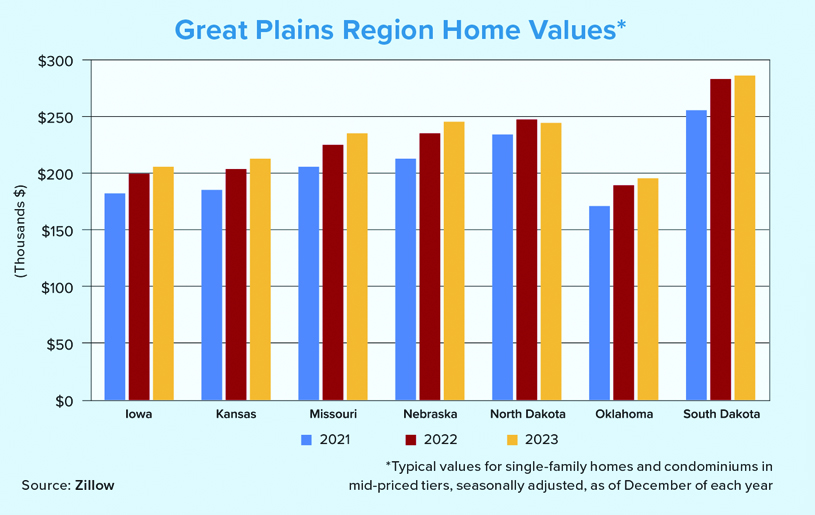
Like the rest of the country, the Great Plains region has seen fast-rising home appreciation over the past five years. That continued last year in the region, where several states saw home appreciation climb faster the 2023 inflation rate of 3.4%, according to Zillow. Kansas, Missouri and Nebraska all saw typical home values increase by more than 4%.
There are signs that that appreciation is slowing, however. The value of homes in North Dakota, for instance, decreased by 1.2% in 2023, according to Zillow. South Dakota home values increased by just 1%.
Three cities in the region were ranked in the top 10 for first-time homebuyers, according to Realtor.com. The website looked at affordability and availability of listings. Winterset, Iowa, a suburb of Des Moines, ranked No. 3 with a median list price of $269,400. Council Bluffs, Iowa, across the Missouri River from Omaha, Nebraska, ranked No. 5 ($200,000). Moore, Oklahoma, just 10 miles away from Oklahoma City, ranked. No. 8 ($231,475).
North Dakota ranked in the top 10 for net migration of Gen Zers, according StorageCafe, a storage unit listing site that tracks migration trends. The Flickertail State attracted 9,277 18- to 23-year-olds in 2022.
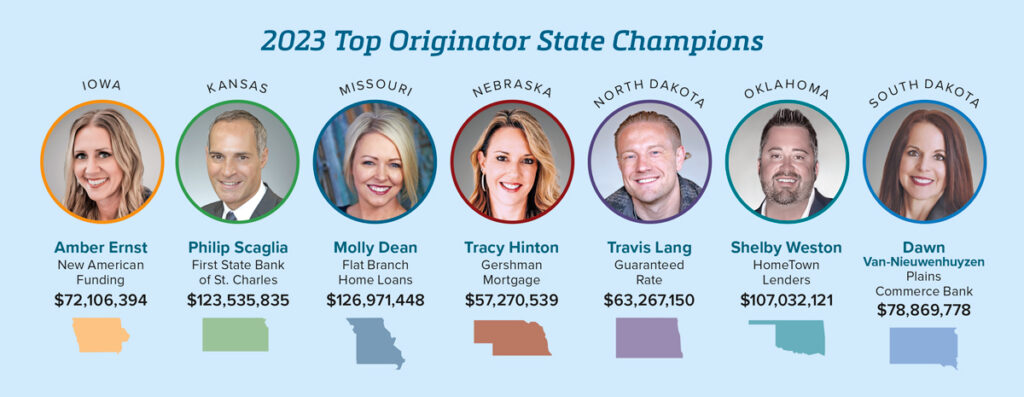
What the Locals Say
The pace of appreciation has slowed, but it’s still incredibly strong appreciation relative to what we would call “normal.” It’s important to recognize that prior to the onset of the pandemic, we were already in a situation where housing markets across the region — and really across the country — were really in a shortage of inventory.
When the pandemic hit, our first thought was that that was going to cool demand in the housing market. Very quickly, we saw all the stimulus that came through to households, but unemployment, especially among the homebuying population, didn’t go up as much as we feared. There were a lot of people sitting there looking at their four walls and saying, ‘I’m never gonna have a better time to buy.’ And it really juiced-up demand.
I do expect that there’s going to be increases in building activity, but it’s going to take years to overcome the deficits that we built up since the end of the financial crisis back in 2009 and 2010.
Interest rates have come down and I think they will continue to come down, but also, I think there’s an element of acclimation. We have this really, bitterly cold weather here (in Kansas). The last few days it was up in the teens and I was walking around outside without a coat, because you got used to the really cold weather. There’s some of that with respect to interest rates. Buyers do have to change their expectations and sort of deal with the sticker shock.

Chair, Center for Real Estate
Wichita State University
Sources: American Gothic House Center, Art Institute Chicago, Becker Hospital Review, Beef 2 Live, Farm Progress, McKinsey & Company, Realtor.com, Silo, Yahoo, Zillow

